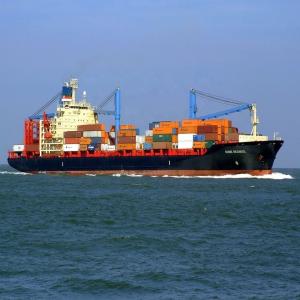Custom Alcohol Import Shipping Warehouse Storage Logistics
Add to Cart
Import From Amica To China For Import Of Alcohol
Current tax rate of imported bottled red wine (the taxes collected
shall be paid in RMB):
1. Tariff: 14% (Tariff: CIF × 14%);
2. VAT: 17% (VAT: (CIF+tariff) × 17%);
3. Consumption tax: 10% (consumption tax: [(CIF+tariff
amount)/(1-10%)] × 10%).
Handle "Chinese registered trademark"
Imported red wine business enterprises shall obtain forms from the
local commodity inspection and quarantine bureau and prepare the
following declaration documents:
1. Enterprise business license;
2. Red wine quality inspection and quarantine report; The
enterprise shall inspect the corresponding imported red wine
samples by the State Administration for Commodity Inspection and
issue an inspection report.
3. The original copy and translation of the manufacturer's
Production License (this license shall be issued by the local
relevant institution or organization in the country of origin);
4. The original copy and translation of the manufacturer's Hygiene
License (this license should be issued by the local relevant agency
or organization in the country of origin);
5. The original copy and translation of the red wine production
process of the manufacturer (only a simple description of the red
wine production process is required, and the company seal or
signature of the person in charge is affixed);
6. Chinese trademark design sample.
The foreign language displayed on the original front label shall be
retained and the corresponding translation must be provided on the
Chinese label, and the font of the Chinese product name shall be
larger than that of the foreign product name. The sample sheet must
be the original size, which can be color printed. After the above
information is complete, the local commodity inspection bureau
shall report it to the State Administration for Commodity
Inspection for review and approval, and issue the "Approval Letter
for Chinese Registered Trademark". One wine corresponds to one
trademark. If a wine applies for another trademark, the Chinese
name of the red wine shall not be the same. If the Chinese name of
the declaration has been repeated, it needs to be named separately.
Customs clearance process:
Filing - pre recording - inspection application - customs
declaration - customs release - dynamic health inspection (label
rectification) - sampling - commodity inspection CIQ - picking
| 1. Buy export license & Provide commodity inspection |
| 2. Pick up and collect goods from your suppliers |
| 3. Consolidate your goods to our own warehouse |
| 4. Repacking,labeling,Pallect,Fumigation.etc |
| 5. Customs Clearance & Documents( FORM A, C/O, FORM E, CI,CO Stamped) |
| 6. Sea freight logistics (FCL/LCL,bulk cargos,20/40/45 GP/HQ) |
| 7. Inland haulage,Deliver to your door step |
| 8. DDU/DDP,Exwork,FOB.Drop shipping.ect |
| 9. Amazon Warehouse Storing |
| 10. Competitive Sea rates and Professional shipping advices |
Information required abroad:
1. Invoice, packing list, bill of lading
2. Health certificate issued by foreign authorities
3. Certificate of Origin issued by foreign authorities
4. Free sale certificate issued by foreign authorities
5. Chinese and English composition matching table provided by
foreign suppliers (required for each model)
6. Whether it is wooden packaging. If there is no wood, the
original statement of no wood shall be provided, and if there is
wood, the fumigation certificate shall be provided.
7. Original English color swatch and translation (if there is a
good Chinese label, it is better to provide it together)
8. Foreign supplier (certificate of bottling date issued by the
winery)
Problems to be noted in the transportation and import link:
1. Plan the transportation method in advance, book the position and
select the transportation company. Imported red wine is mainly
transported by automobile in China, by sea and air across
continents, by sea for large quantities of red wine with general
value, and by air for small quantities of expensive or high-grade
wine. Before the purchase contract is determined, the
transportation mode and transportation agent should be selected at
the same time, and the warehouse should be ordered as early as
possible. Avoid temporary selection or change that may affect the
shipment, and delay that may affect the capital turnover or goods,
especially the high temperature in summer. The delay of goods in
the dock yard is likely to cause high temperature aging of red
wine.
2. Avoid high temperature during transportation. Red wine is a kind
of active brewing wine, which is most afraid of high temperature
during storage. Therefore, it is necessary to avoid the impact of
high temperature during land transportation and sea transportation.
During shipping, the shipping agent can be asked to place the goods
under the waterline and away from heat sources (boiler or engine
compartment). It is better to choose a regular direct flight, and
avoid those irregular or midway bulk cargoes that need to berth in
hot weather areas for loading and unloading.
3. Timely handle transportation insurance. Bottled red wine is
fragile, and insurance is very important, especially for high value
red wine.
Please consult our company for detailed operation process



